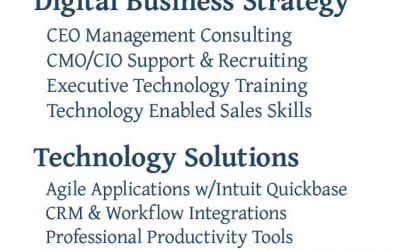Some people start the new year with resolutions. I thought, why not start the year with 10 commandments for marketing — resolutions to do marketing right; that is, marketing that takes into account how the modern landscape and modern consumers have changed.
Thou shalt not target customers with messages they don’t want. No matter how targeted the advertiser thinks the message is, it’s still not targeted, relevant, or timely enough. Gardening equipment ads in gardening magazines, cosmetic ads in fashion magazines, or aftershave ads in guys’ magazines are all better than no targeting at all. But modern consumers are so overwhelmed with information that they generally ignore ads and tune everything out. Studies have shown that 1) ad recall is at an all time low, 2) banner ad click-through rates are usually rounding-errors to zero – i.e., very, very low, and 3) consumers’ eyes avoid the top and right of Web pages because they know that’s where ads are typically placed. Also, minivan ads may be perfectly targeted using demographics and day-part, but they still don’t take into account variables like the fact that the consumer may have just purchased one. There are simply too many variables that affect purchases by any given individual that the targeting schemes of mass media fail to account for. There are far more effective and measurable alternatives to broadcasting general messages out to large audiences using one-way media like TV, print, and radio — so the sun is setting on the era of big “push” advertising.
- Thou shalt be truthful. Advertisers can no longer lie, exaggerate, spin, or tell half-truths about their product or service. If they do, they will be found out and called out. One consumer found an anti-consumer clause in the fine print of his cell phone agreement and posted it to Consumerist.com. It led to a firestorm of publicity that forced the telecommunications company to issue a public statement that they would remove that clause (which said they could kick any user off the network for any reason). A user posted a video of how to pick an expensive Kryptonite bike lock in seconds using a plastic Bic pen. Consumers called out Best Buy for its “pre-optimized” computers. And movie marketing used to excerpt the best scenes from the film to use in glossy TV ads. Turns out, if those were the only good scenes in the whole film, the movie will head straight to DVD no matter how much money was poured into the saturation marketing campaign. The voice of the people in reviews will still drown it out. Any claim has to be backed up by an awesome product or service.
- Thou shalt respect your customers. Consumers are empowered with information and with connected peers who help them vet, filter, and prioritize what is important and useful to them. They will quickly find out when reviews, blog posts, or tweets are paid for or planted, like in the case of Belkin. Advertisers also need to respect consumers’ privacy, their intelligence and resourcefulness, and their power, or else suffer the consequences. Facebook tested a few schemes that were quickly quashed by consumers who felt it overstepped the boundaries of decent advertiser behavior — 1) beacon — a consumer’s friends are alerted when they visit other third-party Web sites and look at products; the feature was launched as an opt-out and most consumers objected; 2) social ads — a consumer’s image and likeness was used near an ad, which resulted in friends being tricked into thinking they endorsed the advertiser or product; again, consumers had to manually change a setting to disallow this. With the collective “eyes on,” consumers can easily overcome any advertiser behaving badly.
- Thou shalt make it easy for people to find you. If the above three commandments put a damper on “push” advertising, this commandment makes it explicit that it’s equally important to balance it with “pull” techniques — make your information more or most easily findable by customers when they search for it. When modern consumers become aware of a product or service, they typically do some more research on their own online. The higher the cost of the item, the more complex it is, or the higher consideration it is, the more research that will be done. Advertisers have historically spent the bulk of their dollars pushing messages out at people when they don’t want it, and not enough time, effort, or dollars on when they do want it. The result is that if the consumers can’t find your information, or worse if they find the information of your competitors first, you lose.
- Thou shalt be useful. It goes without saying that the products or services being advertised must be useful in and of themselves. If they are frivolous, unnecessary, or just nice-to-haves, they will be the first to be cut when consumers’ spending gets tight. Today, however, even the marketing of the product or service needs to be useful or else consumers won’t use it and will definitely not pass it along. People need help making purchase decisions. A “how-to” video showing how to set up a home theater system is useful and may help one advertiser win the purchase over another similarly spec’ed and similarly priced system. Intel’s live chats where the actual engineers who made the technologies talk with information technology professionals considering buying those technologies were extremely useful in answering questions too esoteric or specific to ever be included in marketing materials. Chipotle’s iPhone app for pre-ordering, Netflix’s Facebook Fan Page for gathering feedback and ideas, and JetBlue’s Twitter for customer service are useful applications.
- Thou shalt make it easy for people to pass along. Word of mouth is one of the most powerful influences on customers’ purchases because it doesn’t come from the marketer and isn’t marketing. Recommendations can come from friends, whom the customer trusts to have sufficient knowledge about specific things to recommend — e.g., an HDTV guru, a digital camera enthusiast, or a foodie; or it can come from groups of strangers — e.g., the 250 people who reviewed a camcorder on Amazon and all consistently rated it four+ stars out of five. Word of mouth is not something that can or should be done by advertisers. But advertisers can indeed make it easier for consumers to pass-along information or make recommendations at or near the moment of inspiration — by doing simple things like adding “share this” links on everything, everywhere. Also, mobile devices are allowing consumers to be constantly connected, and, if they are so inspired, they can write a review even while savoring the last tasty morsel at that awesome restaurant.
- Thou shalt measure and optimize. With more and more information, conversations, and actions going online, advertisers have more data than ever to determine what marketing is working and also to optimize it even while campaigns are still in process. With digital tools, devices, and channels data and feedback can be obtained virtually in real time. This contrasts to the extremely long lead times for creating, placing, and airing ads through traditional channels like TV, print, and radio. Click rates are one indicator of which ads are working better than others. Relative search volume can not only indicate interest but can even be used to optimize the words used in marketing materials — e.g., if more consumers search “ten commandments” than “10 commandments,” then the former term should be used. And finally, the words that consumers use to find information or the questions they are most frequently asking online can enable advertisers to optimize content or even create new content (to answer the questions).
- Thou shalt listen to customers. People talk when they really hate something or when they really love it. More and more people are doing such ranting or raving about stuff online, and these are the absolute best customers to be listening to. The ones who love your product will tell you what you’re doing right. The ones who hate your product will reveal ways you can improve your product or even make derivative products to fit their expectations and needs. There are dozens of tools for “listening” online, for pure, unadulterated feedback from large numbers of customers; but advertisers still too often use the inaccurate, subjective, taintable, and non-statistically significant output of focus groups for business decision making. If consumers are frequently asking about the low light performance of digital cameras, advertisers can update their marketing materials to address these questions or tout their features. If they don’t actually have the feature, they can go build it. Starbucks’s MyStarbucksIdea.com, Dell’s IdeaStorm, and LEGO’s continuous interaction and collaboration with enthusiasts goes a long way in helping them stay ahead through innovation — inventions that actual customers want instead of something dreamed up in the lab by product development people.
- Thou shalt remove any organizational barriers to speedy, collaborative innovation. If your sales and marketing people don’t meet with or talk with your product development people more than once a year at a holiday party then you’ve got a problem. The people who are at the “front lines” communicating with customers and hearing their needs and challenges with using the product, etc. are the best people to feed new ideas to the product development teams so they can rapidly improve the product or service. Many organizations are set up such that product development is off on their own and separate from sales and marketing. Often the sales and marketing teams are also separated; not to mention the “budget-divide.” Marketing is off brainstorming grandiose brand colors, attributes, and phrases — oblivious to how a sales person actually just closed a deal by explaining a key detail to a buyer. Organizational divides and the lack of fluid knowledge sharing and transfer very often hinder the innovativeness of companies. And speedy innovation is fast becoming an essential ingredient to survival in the new digital world. No longer does it hold true that first-to-market will win; fast followers who can out-innovate the pioneer can win too — see Vizio, the number one HDTV manufacturer in the U.S. by sales. It actually has technologically superior products that cost less than its far larger competitors.
- Thou shalt not do brand-ing. If advertisers have faithfully followed the previous nine commandments, they are unlikely to “sin” against this one. Brand-ing (with a dash) is the act of telling customers what a brand is. Most traditional ads are designed to do this — TV ads designed to evoke “emotion,” etc. But have you noticed that most car ads look the same now — young person driving fast down an imaginary road set to rock music? Not exactly helpful to a modern consumer who is intelligent, informed, and empowered. Also, do brand taglines like Wendy’s “you know when it’s real” or costly rebrandings like Tropicana’s failed package redesign (which included an orange-shaped cap designed to “evoke the notion of squeezing the orange”) do anything for the modern consumer? On the other hand Sweetriot came out of nowhere, used no paid advertising of any kind, and relied entirely on social marketing techniques to create a sustained upward spiral of sales. Its down-to-earth brand reputation was earned over time through consistent stewardship of every interaction with customers, backed up by awesome products. The moral of this story is that a brand is something earned over time, like reputation, and not something that advertisers can simply tell consumers they are anymore.
So, if advertisers follow some or all of these 10 commandments, they could probably better prioritize their dollars, and also improve the effectiveness of their marketing in the modern digital world.
Agree with me, or tell me I’m stupid — light up the comments! Happy New Year!
This column was originally published January 7, 2010 on ClickZ.
Exceptional post / list
.





